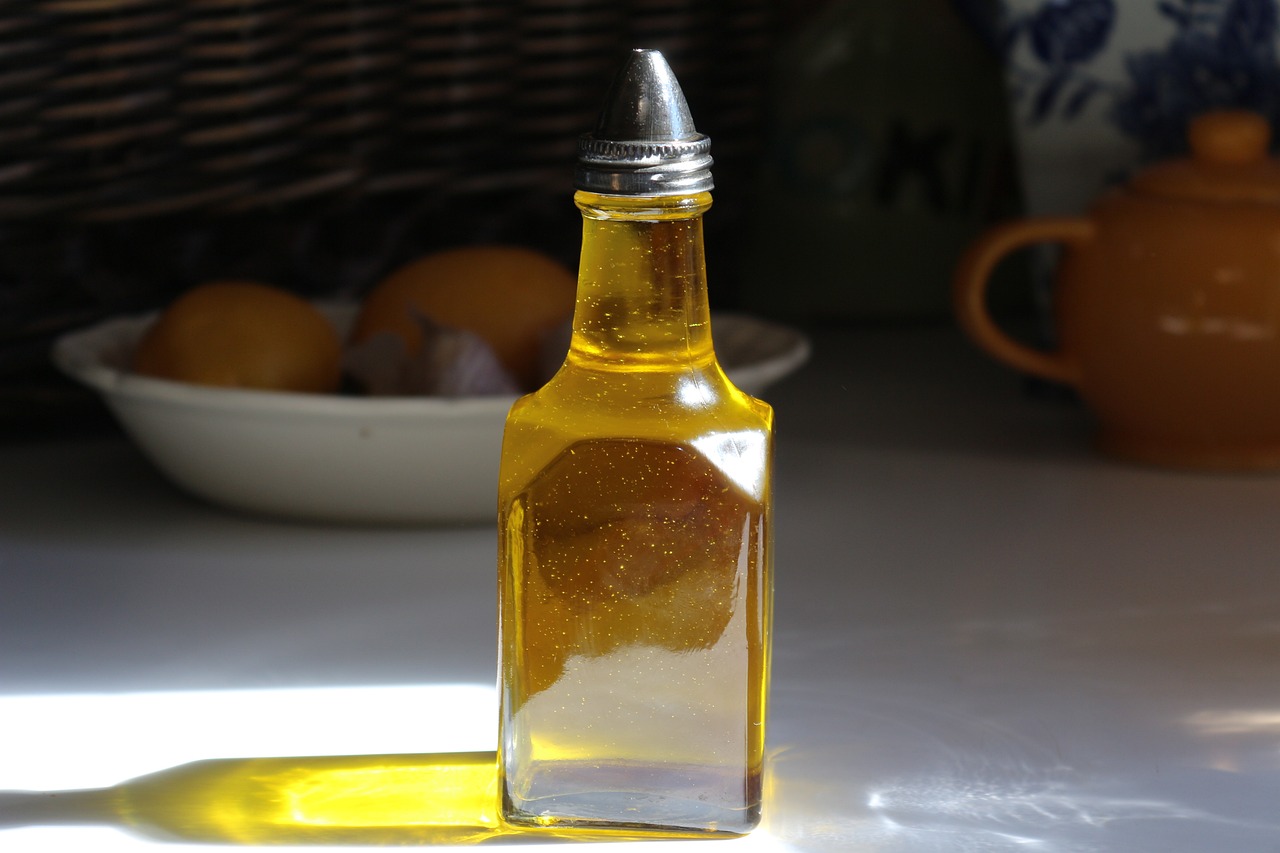Squalene is a naturally occurring compound that plays an essential role in maintaining health, particularly due to its potent antioxidant properties. Found in human skin and other tissues, squalene acts as a precursor to cholesterol and vitamin D synthesis and protects cells from oxidative damage. Squalene is widely known for its ability to neutralize free radicals, thereby reducing the risk of chronic diseases such as cancer, cardiovascular disease, and neurodegenerative disorders.
While squalene is naturally produced by the human body, especially in the skin, its production tends to decrease with age. This has led to an increased interest in dietary sources of squalene to support overall health. Consuming foods rich in squalene can help protect the skin, reduce inflammation, and improve immune function. In this article, we will explore 15 of the best foods rich in squalene and their benefits for antioxidant protection and overall well-being.
1. Olive Oil: A Leading Source of Squalene
Olive oil, particularly extra virgin olive oil, is one of the richest sources of squalene. This oil is a cornerstone of the Mediterranean diet, which has long been associated with numerous health benefits, including reduced risks of heart disease, cancer, and cognitive decline. The high content of squalene in olive oil acts as a powerful antioxidant that helps reduce oxidative stress and inflammation throughout the body.
Squalene in olive oil contributes to skin health by promoting hydration and protecting the skin from damage caused by UV rays and pollutants. Olive oil can be used in cooking, salad dressings, or drizzled over roasted vegetables to maximize its antioxidant benefits.
2. Shark Liver Oil: The Original Source of Squalene
Historically, shark liver oil has been one of the most recognized sources of squalene. It contains a high concentration of this compound, which helps protect sharks from the harsh, oxygen-poor environments of deep-sea habitats. While shark liver oil supplements are available, many people choose plant-based sources due to sustainability concerns.
Squalene from shark liver oil has been studied for its ability to boost the immune system, reduce inflammation, and support skin health. However, due to ethical and environmental concerns, many consumers now prefer plant-based sources of squalene, such as olive oil or amaranth seeds.
3. Amaranth Oil: A Plant-Based Squalene Powerhouse
Amaranth oil is one of the richest plant-based sources of squalene, making it a popular alternative to shark liver oil. Amaranth seeds, from which the oil is extracted, contain significant amounts of squalene along with other beneficial nutrients such as vitamin E and essential fatty acids. This combination of nutrients helps protect cells from oxidative stress, support skin health, and promote overall well-being.
Amaranth oil can be used in cooking or as a supplement, and its high squalene content makes it a great addition to a diet focused on antioxidant protection. Regular consumption of amaranth oil may help reduce the risk of chronic diseases and improve skin hydration and elasticity.
4. Rice Bran Oil: A Versatile Cooking Oil High in Squalene
Rice bran oil is another plant-based oil that is rich in squalene. It is extracted from the outer layer of rice grains, which contains a variety of nutrients including squalene, gamma oryzanol, and tocopherols (vitamin E). These compounds work together to protect the body from oxidative stress, reduce inflammation, and promote cardiovascular health.
Rice bran oil has a mild flavor and a high smoke point, making it ideal for frying, sautéing, and baking. Incorporating rice bran oil into your cooking routine can help ensure that you receive the antioxidant benefits of squalene while enjoying a versatile and heart-healthy oil.
5. Wheat Germ Oil: Packed with Squalene and Vitamin E
Wheat germ oil is derived from the germ of the wheat kernel, and it is one of the best plant-based sources of squalene. In addition to squalene, wheat germ oil is rich in vitamin E, which enhances its antioxidant properties and makes it beneficial for both skin health and overall cellular protection.
Wheat germ oil can be added to smoothies, salad dressings, or taken as a supplement. Its high squalene content helps protect skin cells from oxidative damage, reduces inflammation, and supports healthy aging by maintaining skin elasticity and hydration.
6. Rice Germ Oil: Another Rich Source of Squalene
Like rice bran oil, rice germ oil contains high levels of squalene. Extracted from the germ of rice grains, this oil is known for its ability to protect against free radical damage and promote skin health. Squalene in rice germ oil acts as a natural emollient, helping to hydrate the skin and reduce the appearance of wrinkles.
Rice germ oil can be used as a cooking oil, particularly for light frying and sautéing. Its mild flavor and antioxidant benefits make it a great addition to a health-conscious diet.
7. Pumpkin Seeds: Nutritious and Squalene-Rich
Pumpkin seeds, also known as pepitas, are another plant-based food rich in squalene. These seeds are also packed with zinc, magnesium, and omega-3 fatty acids, making them a nutrient-dense food that supports overall health. The combination of squalene and other nutrients in pumpkin seeds helps protect the skin, boost the immune system, and reduce inflammation.
Pumpkin seeds can be eaten as a snack, added to salads, or incorporated into smoothies. Including them in your diet regularly can help enhance your intake of antioxidants and promote healthy skin and cellular function.
8. Tomatoes: A Natural Source of Squalene
Tomatoes contain squalene, particularly in the skin of the fruit. In addition to squalene, tomatoes are rich in lycopene, a powerful antioxidant that has been shown to reduce the risk of certain cancers and protect against heart disease. The combination of squalene and lycopene makes tomatoes an excellent food for supporting overall antioxidant protection.
Eating fresh tomatoes, tomato sauces, or sun-dried tomatoes can help increase your intake of squalene. Cooking tomatoes with a healthy fat like olive oil can also enhance the absorption of both squalene and lycopene, maximizing their health benefits.
9. Olives: A Source of Squalene and Heart-Healthy Fats
Olives, like olive oil, are a rich source of squalene and other beneficial nutrients. In addition to their high squalene content, olives are packed with monounsaturated fats, which support heart health and reduce inflammation. Eating olives regularly can help protect your cells from oxidative damage and improve skin health.
Olives can be eaten as a snack, added to salads, or incorporated into Mediterranean dishes. Their squalene content, along with healthy fats and antioxidants, makes them an excellent food for promoting long-term health.
10. Soybeans: A Plant-Based Squalene Source
Soybeans are another plant-based food that contains squalene. In addition to being rich in squalene, soybeans are a great source of plant-based protein, fiber, and isoflavones, compounds that have been shown to reduce inflammation and support cardiovascular health. The squalene in soybeans helps protect cells from oxidative stress and may reduce the risk of chronic diseases.
Soybeans can be consumed in various forms, including tofu, tempeh, soy milk, and edamame. Incorporating soy products into your diet can help boost your intake of squalene and provide a host of other health benefits.
11. Avocados: A Creamy, Squalene-Rich Superfood
Avocados are well-known for their healthy fats, but they are also a good source of squalene. The combination of monounsaturated fats and squalene in avocados makes them a powerful food for promoting heart health, reducing inflammation, and protecting the skin from oxidative damage.
Avocados can be enjoyed in many ways, from adding slices to salads and sandwiches to blending them into smoothies or making guacamole. Eating avocados regularly can provide your body with the squalene and healthy fats it needs to maintain optimal health.
12. Peanuts: A Squalene-Rich Nut for Heart Health
Peanuts are another source of plant-based squalene, as well as being rich in healthy fats and protein. The squalene in peanuts acts as an antioxidant that protects cells from oxidative damage, while the healthy fats support heart health by reducing cholesterol levels and inflammation.
Peanuts can be eaten as a snack, added to salads, or used in cooking. Incorporating peanuts into your diet can help boost your intake of squalene and promote overall health.
13. Chia Seeds: Rich in Omega-3s and Squalene
Chia seeds are famous for their high omega-3 fatty acid content, but they also contain squalene. These tiny seeds are packed with antioxidants, fiber, and healthy fats, making them a nutrient-dense food that supports heart health, skin health, and overall well-being.
Chia seeds can be added to smoothies, yogurt, or oatmeal, or used to make chia pudding. Regular consumption of chia seeds can help protect your cells from oxidative stress and reduce inflammation, thanks to their squalene content.
14. Corn Oil: A Common Cooking Oil High in Squalene
Corn oil is another cooking oil that contains significant amounts of squalene. While it is commonly used for frying and baking, corn oil can also be a source of antioxidants that help protect the body from oxidative stress and inflammation. However, it’s important to use corn oil in moderation, as it is also high in omega-6 fatty acids, which can contribute to inflammation if consumed in excess.
By using corn oil in balance with other healthy fats like olive oil and avocado oil, you can benefit from its squalene content while maintaining a healthy diet.
15. Barley: A Whole Grain with Squalene
Barley, a nutritious whole grain, contains small amounts of squalene along with other beneficial nutrients such as fiber, vitamin B6, and selenium. Barley is particularly beneficial for heart health, as it helps reduce cholesterol levels and improve digestion. The squalene in barley adds an antioxidant boost that can help protect cells from oxidative damage.
Barley can be used in soups, stews, or salads, or as a substitute for rice. Including barley in your diet can help increase your intake of squalene while providing additional nutrients that support overall health.
Conclusion
Squalene is a potent antioxidant that provides numerous health benefits, from protecting the skin to reducing the risk of chronic diseases. While the body produces squalene naturally, incorporating foods rich in squalene into your diet can provide additional antioxidant protection and support overall health. From olive oil and amaranth oil to avocados, peanuts, and chia seeds, these foods offer a wide range of nutrients that contribute to healthier skin, improved heart health, and reduced inflammation.
By adding these squalene-rich foods to your daily meals, you can boost your antioxidant intake, promote healthy aging, and protect your body from the damaging effects of oxidative stress. Whether you’re looking to support skin health or reduce your risk of disease, these foods provide a natural and delicious way to enhance your overall well-being.




